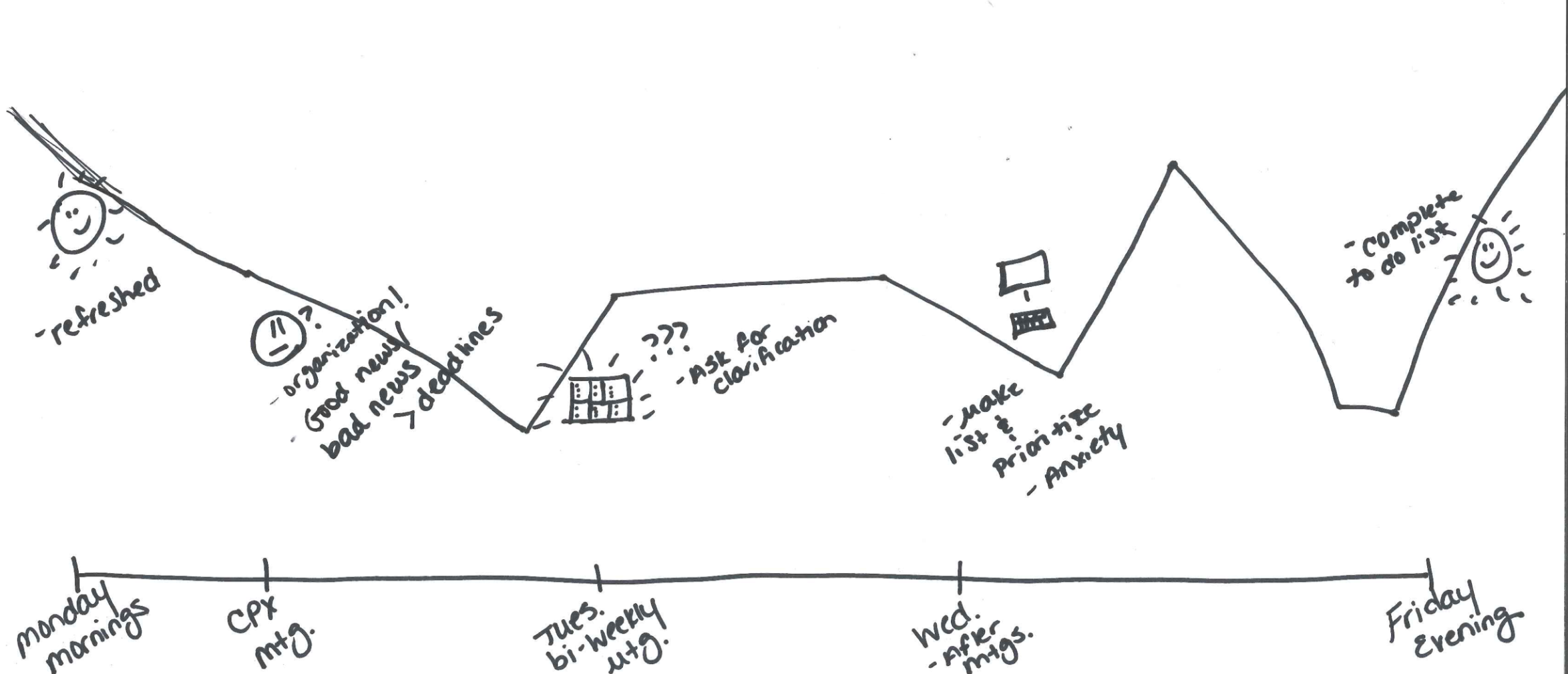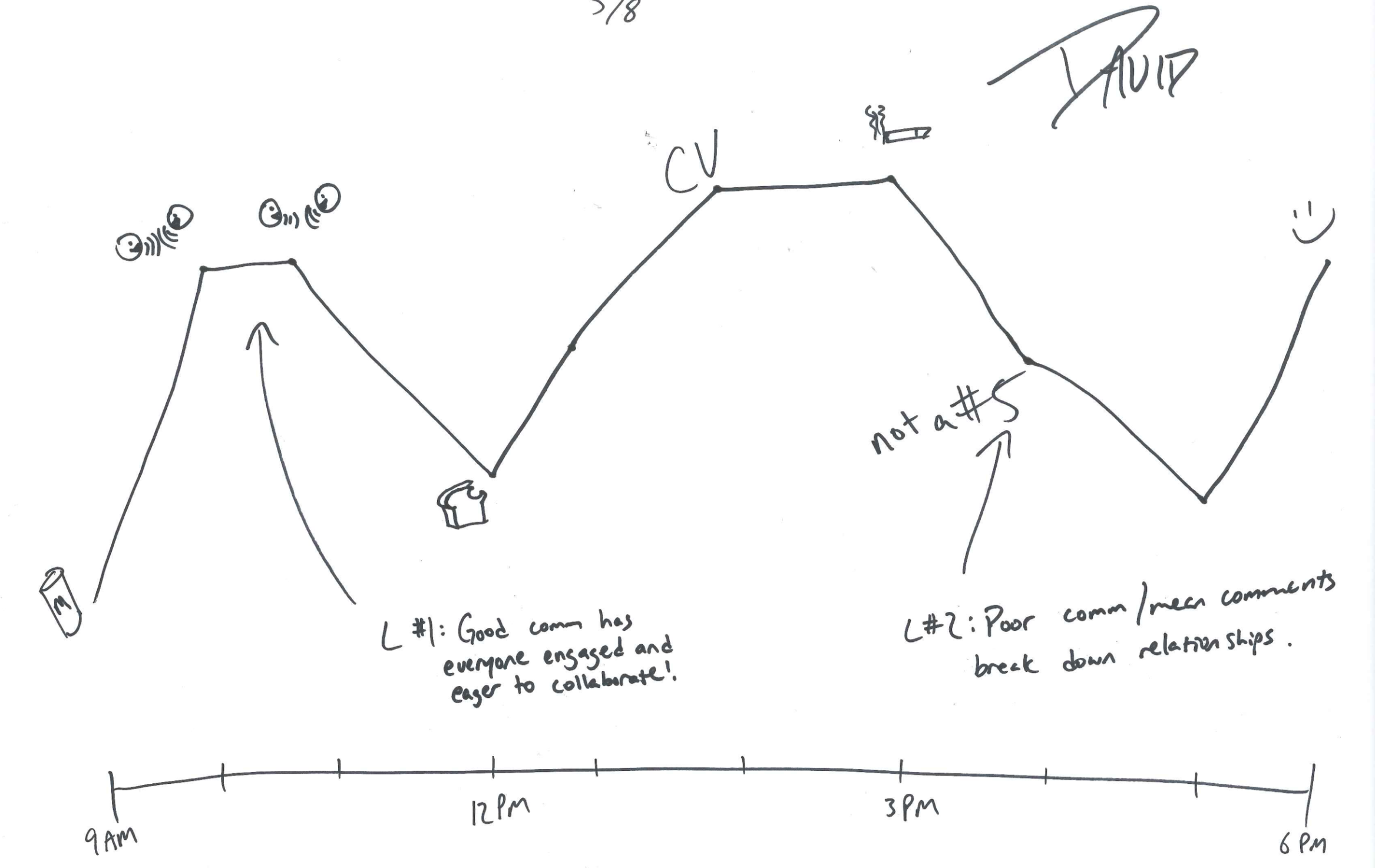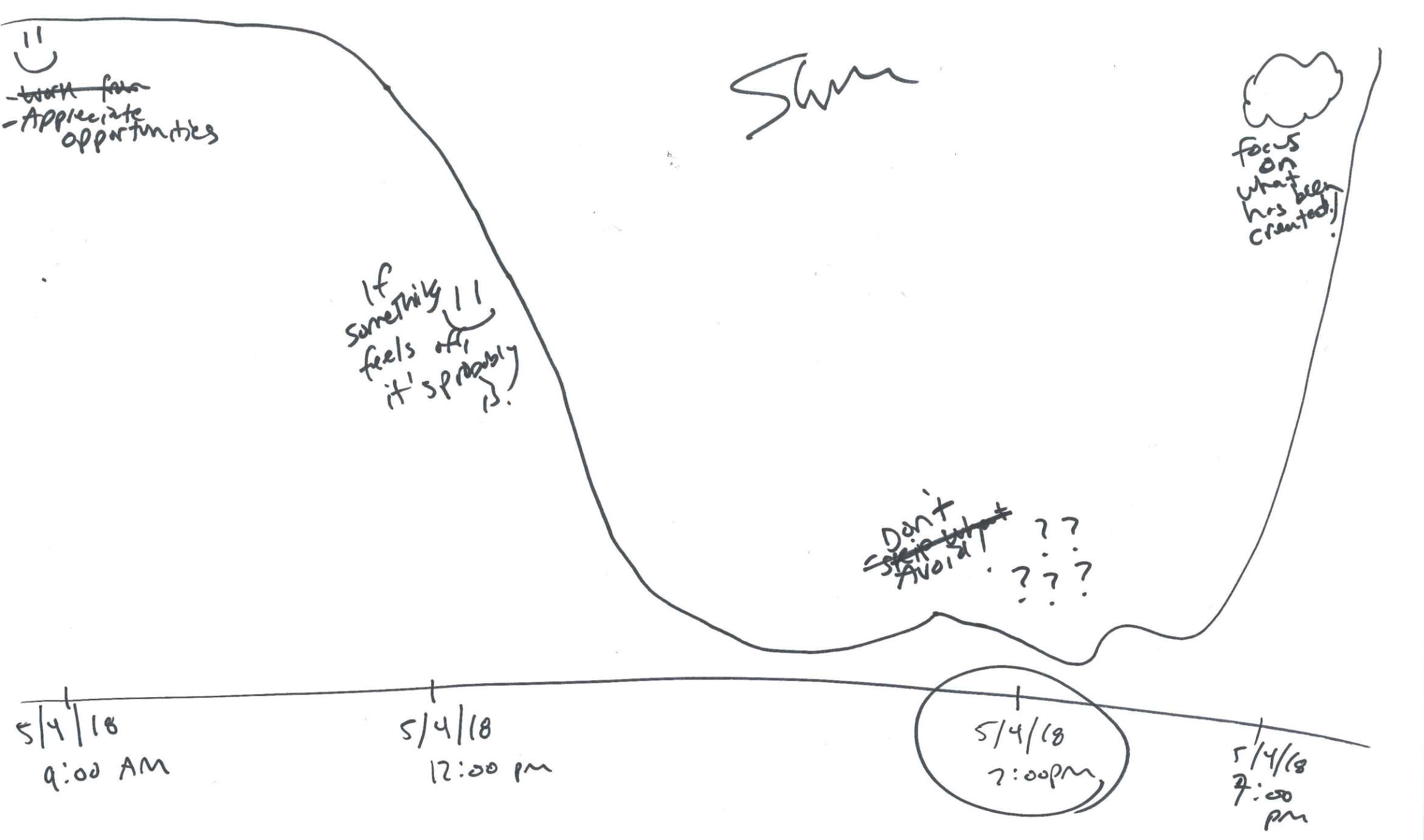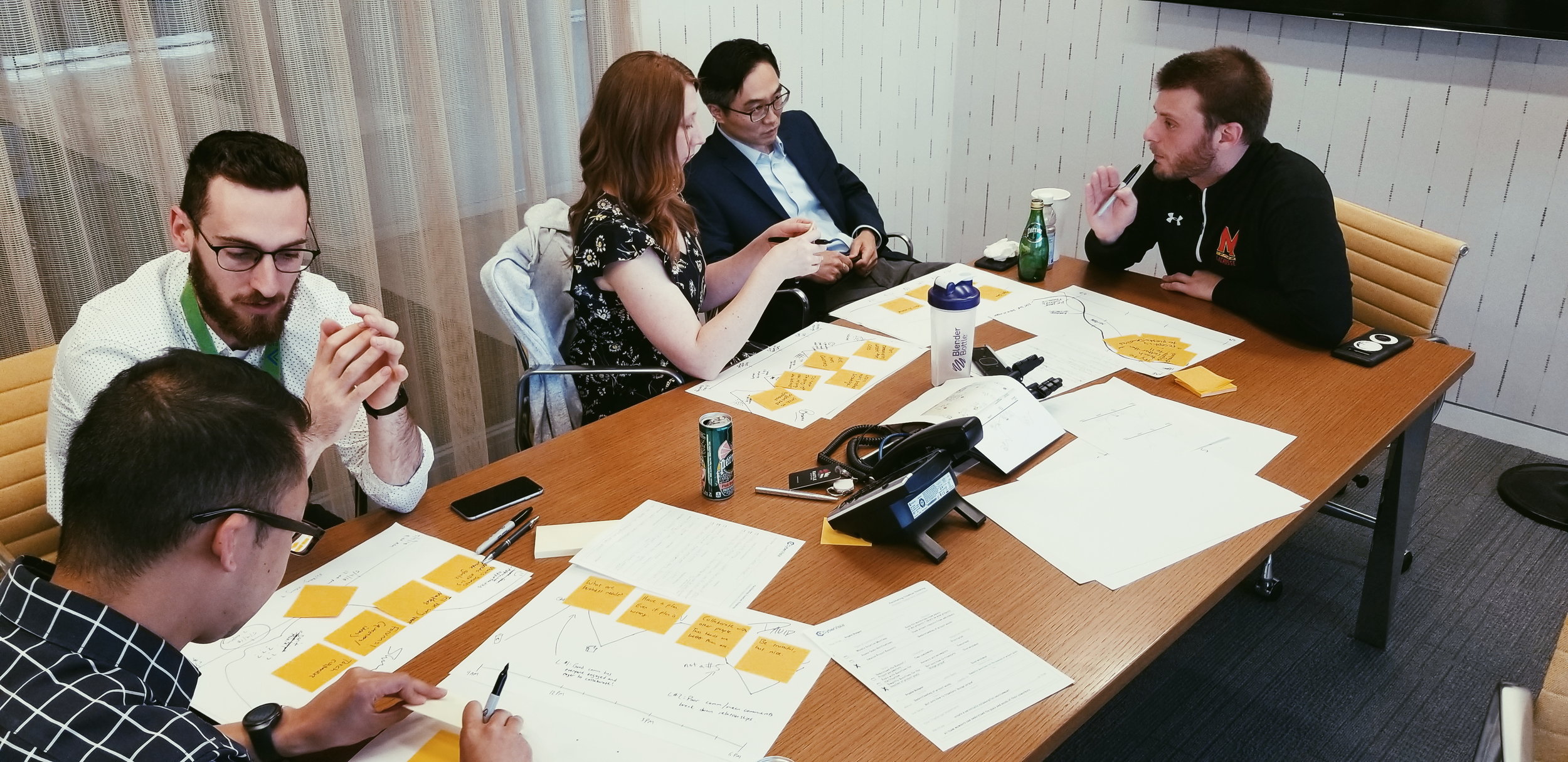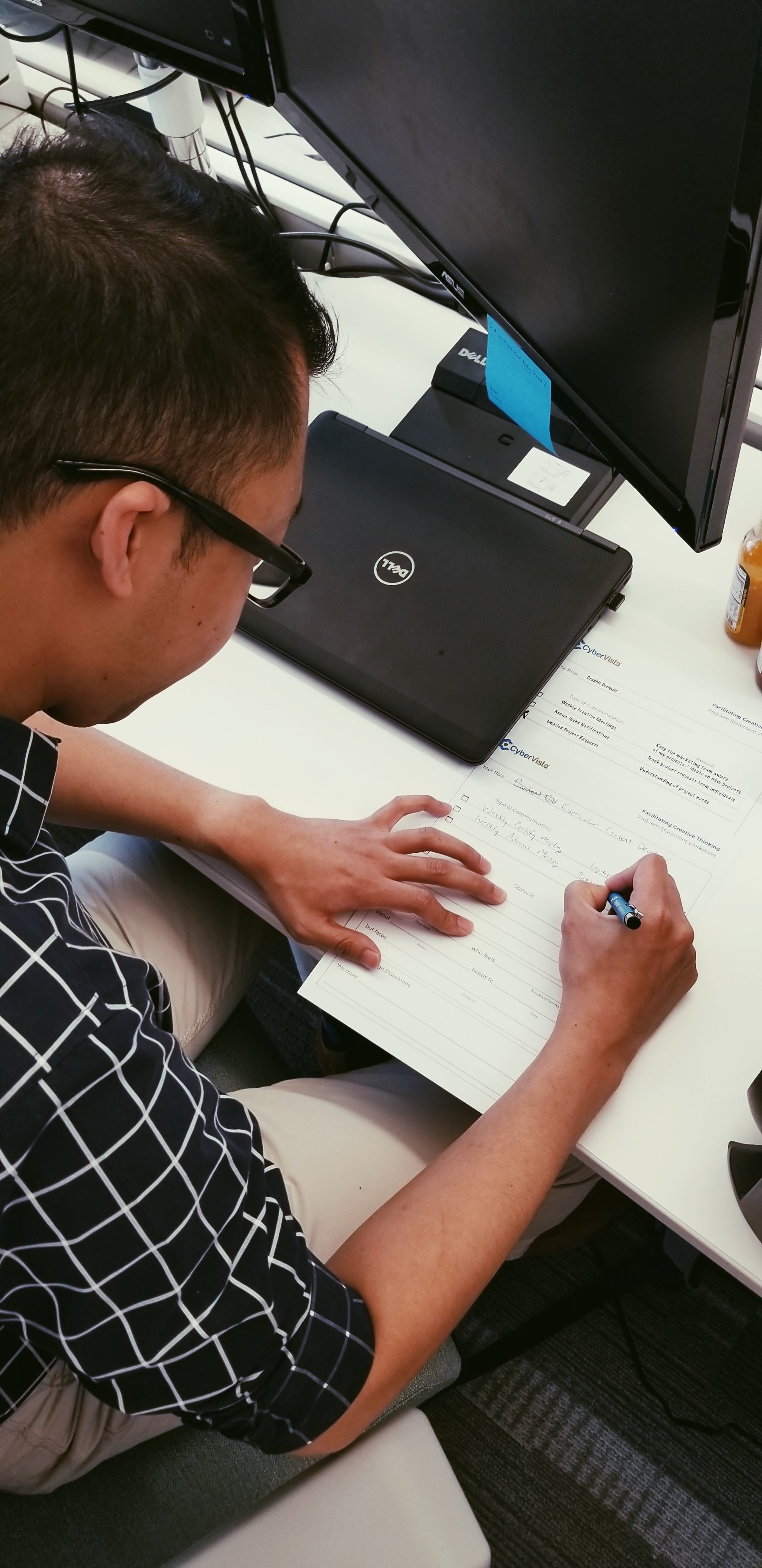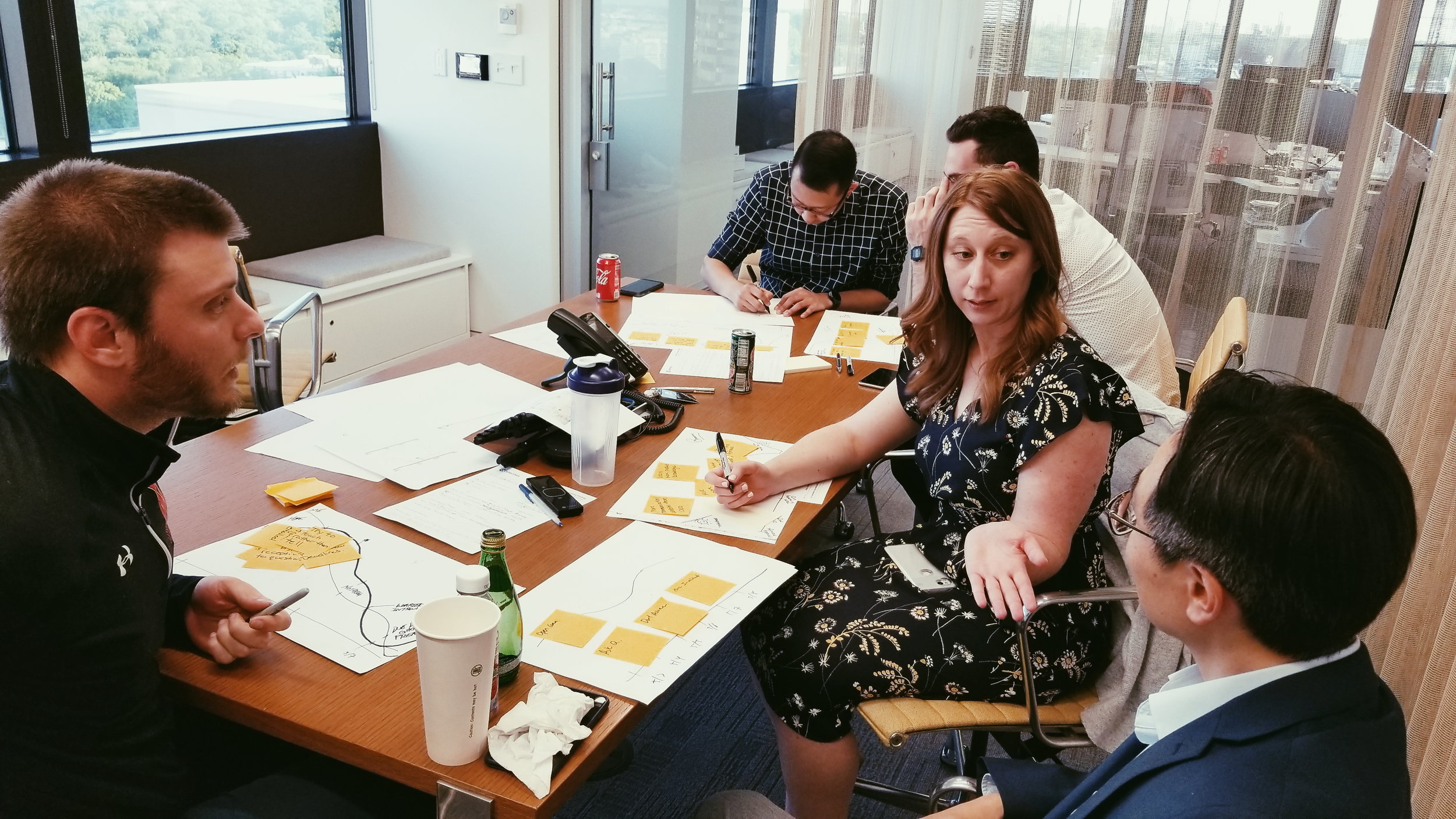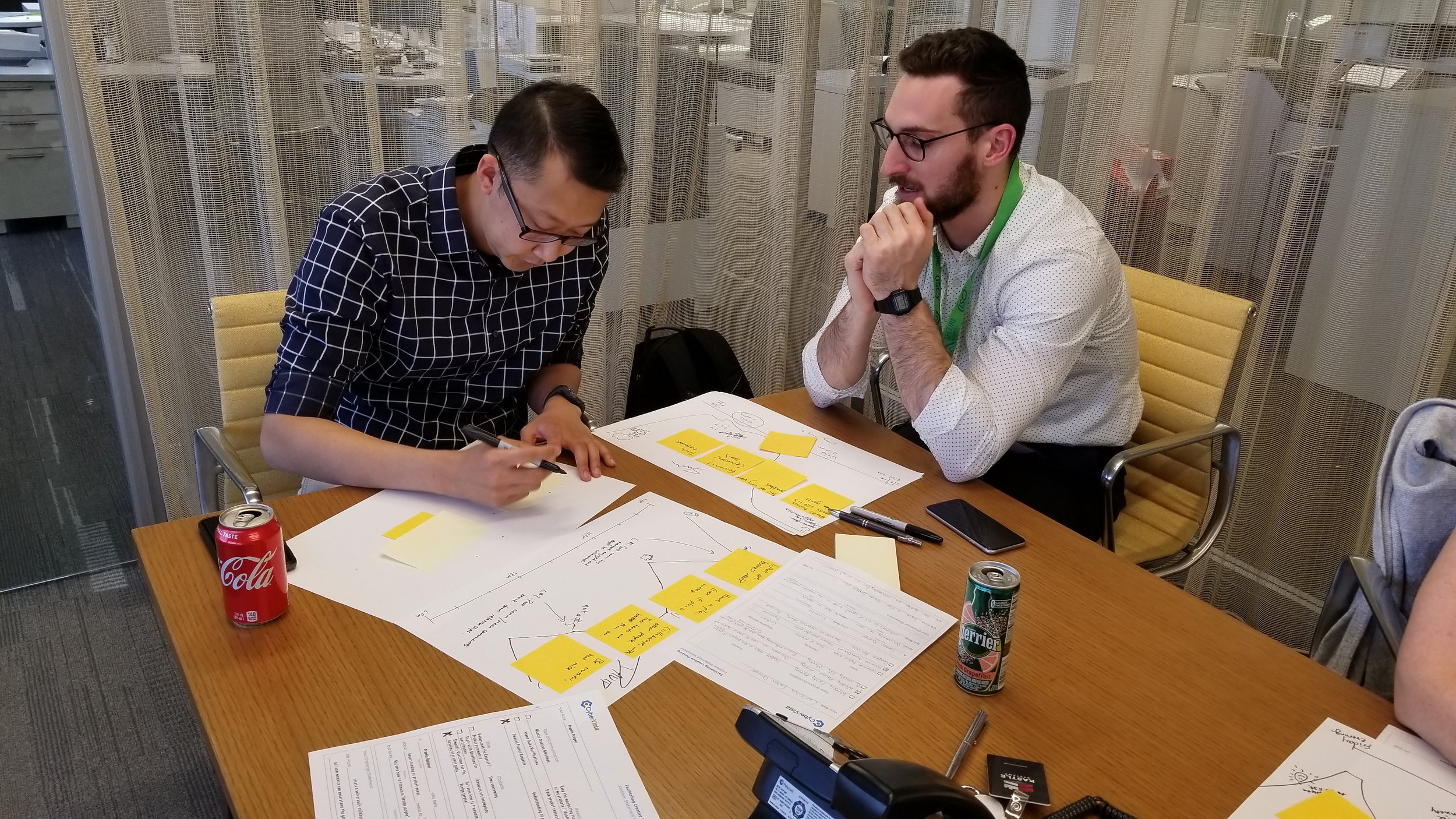The Challenge
Successful design managers need to be able to create the conditions for creative thinking and innovation within an organization composed of a wide variety of professionals, most of whom are not familiar with design thinking. It was my challenge, as a facilitator, to lead a team in the envisioning of new ideas and solutions by developing skills in framing, imaging, and group interaction as they apply the process of design conceptualization outside of the familiar domain of studio skills.
Choosing an entity to study
The goal of this study was to help Cybervista, a D.C. area startup, to understand the impact communication has on the success of a business and the culture among employees. We achieved this goal through the use of collaborative sessions that encouraged storytelling and design thinking.
Defining A Problem
The CyberVista team wanted to address ‘Communication’ as a problem that needs periodic reassessment. Periodic reassessment occurs not because of need, but because something has not been assessed for a long time. It’s a means of looking at things that are often times taken for granted.
The team ultimately uncovered that communicating the needs of the business was essential to helping them align their contributions and goals accordingly. How might we make business goals easier to understand?
Activity A: The Problem Statement Worksheet
Sentence completion was used as a technique to extract value out of employee experiences. Each team member was asked to evaluate the various means of communication that are pertinent to their position. This exercise was adapted from the team at EightShapes.
Activity B: Expressing facts through Visual Storytelling
A visual storytelling activity was intended to have each participant reflect on internal communication at CyberVista and create a timeline of their personal experiences. This activity required step-by-step facilitation to understand and achieve the desired visual result. This activity took place after the previous worksheets were completed and shared.
The result of the activity is entirely visual and the artifacts communicated a great deal about employee well-being. The reason we tell visual stories is not because it’s fun, but because we want to draw value and meaning out of our experiences. Ultimately, we tell stories so we can advance our work and bring people together.
Activity C: Problem Solving THROUGH BRAINSTORMING
Now, how do we solve the problems we have identified? In order to develop specific + actionable ideas, the team must first “empty their box” through brainstorming. Equipped with 3x3 post-it notes, the team was instructed to come up with initial ideas individually that would solve the problem statement they had crafted. When each participant exhausted their individual ideas, we tossed those ideas aside and collaborated to generate an additional round of more specific ideas. The purpose of the exercise is to be generative with ideas and to continue exploring possibilities.
Team Reflections
“My immediate thought was that I naturally do not think of myself as a strong creative thinker. I was concerned about how much I would be able to contribute to the group and exercise.”
“I was concerned that, since the exercise was work related, I couldn’t be open about work issues with my colleagues and supervisors present. However, it proved to be a welcoming environment.”
“I learned that it is much easier to be heard and more importantly understood in smaller groups. Sharing ideas and voicing thoughts come off much more genuine and can be taken more seriously.”
Outcomes
As an outcome, the team learned to express facts and information using creative tools. The team was able to uncover value in their individual experiences and share them in a meaningful way. Designers often diverge to understand the depth of a problem before converging on a solution. The concept of converging and diverging was applied in this workshop as we rotated through the various activities. On top of providing value to an organization, this was a great opportunity for me to demonstrate the value of collaborative design thinking in an unexpected environment.







